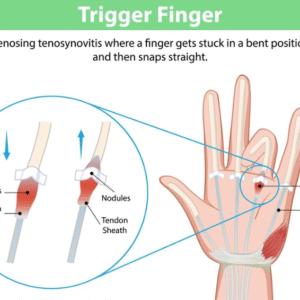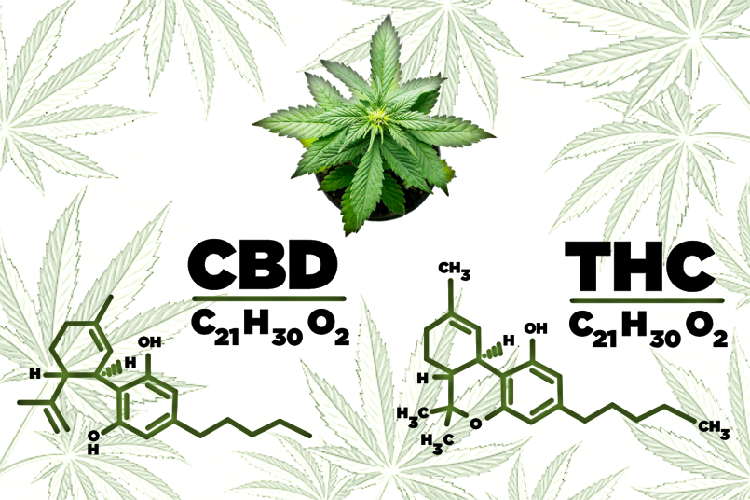Mental health is increasingly getting attention in today’s world, but some people still struggle to understand it fully. Mental health may be described as behavioral, cognitive and emotional well-being or, in simpler terms, how people think, act or express themselves. It can affect day to day activities, including physical health and relationships.
Furthermore, there are a number of factors in people’s lives that can hinder or disrupt mental health, including conditions such as anxiety, depression and stress. This is why it is vital to pay necessary attention to Mental health so that a balance is created between activities, responsibilities and how to remain psychologically strong in the face of disruptions.
The World Health Organization (WHO) describes mental health as “a state of well-being in which an individual realizes his or her abilities, can cope with the normal stresses of life, can work productively, and can contribute to his or her community.”
From this definition, we can deduce that peak mental health can be achieved by paying attention to ongoing wellness and happiness while avoiding operational conditions that disrupt mental health.
A study conducted by the National Institute of Mental Health (NIMH) in 2017 estimated that about 4.5 percent of 11.2 million adults in the United States of America suffer from a psychological condition. This means that everyone is at risk of developing mental health disorders irrespective of ethnicity, gender, income or age. Furthermore, the research also found that biological factors, lifestyle choices, and social conditions can positively or negatively impact mental health.
Some of the factors that may contribute to disruptions of mental health include continuous economic and social pressure, including poverty, availability of mental health treatment facilities, occupation, education and housing quality which can be modified to achieve optimum health. A genetic family history of mental health conditions may also put certain people at risk of having mental health disorders.
Specific genes have been linked to mental disorders, including schizophrenia and depression; however, some research has shown that people without a family history of mental disorders may still experience mental health problems. It is also important to note that some mental health conditions, including anxiety, stress and depression, may develop due to physical health problems such as chronic pain, diabetes and cancer.
Common Mental Health Disorders:
The most common mental health disorders include anxiety, schizophrenia and mood disorders.
Anxiety Disorders
Anxiety disorders are the most common mental illness, and sufferers have an intense fear of certain situations or objects. It can be treated by identifying the triggers and avoiding them. The physical symptoms of Generalized Anxiety Disorders (GAD) include tense muscles, fatigue, interrupted sleep and restlessness.
Panic Disorder
Panic disorders can be described as when a person experiences regular panic attacks that result in fear, terror or feeling of imminent disaster and death.
Phobias
There are different phobias, including simple phobias based on a fear of certain scenarios, animals, or specific objects. A good example is the fear of cockroaches or spiders.
Social phobia or social anxiety is when people are scared of being judged by people. People with social phobia will often reduce or restrict their exposure to social environments.
Agoraphobia is usually characterized by a fear of situations where people find it difficult to extricate themselves. Examples of such conditions include being in an elevator, moving train or vehicle.
Phobias are usually personal, vary from one person to another, and medical professionals find it difficult to identify every type. Hundreds or even thousands of phobias may exist, and what one person sees, as usual, may cause severe problems for another person.
Obsessive-Compulsive Disorder (OCD)
When a person is said to experience OCD, it means that they experience compulsions and obsessions along with stressful thoughts and an irresistible urge to perform certain acts repetitively.
Post-Traumatic Stress Disorder (PTSD)
PTSD mainly occurs when an individual witnesses or experiences an event that is traumatic or stressful. Individuals experiencing this will mostly feel that their lives or those close to them are in danger, and they have little or no control over such situations. Such trauma or sensations may then result in PTSD.
Mood Disorder
Mood disorders are also known as depressive or affective disorders. They are characterized by individuals experiencing significant changes in their moods with mania or a period of elation and another period of depression.
Bipolar Disorder
People living with bipolar disorder will likely experience varying changes in energy levels, mood, and levels of activities in their daily lives. They also experience manic phases or periods of high mood and periods of low moods or depressive phases.
Seasonal Affective Disorder (SAD)
Seasonal Affective disorders are usually triggered by reduced daylight of particular seasons, including early spring months, fall and winter. It is common in countries that are far from the equator.
Schizophrenia Disorder
Schizophrenia is a highly complex condition, and signs tend to develop in sufferers between the ages of 16 to 30, characterized by fragmented thoughts and difficulty in processing information.
Schizophrenia comes with some positive symptoms, including hallucinations, delusions and disorderliness in thoughts. On the other hand, the negative symptoms include a lack of motivation, a flat mood and withdrawal.
Schizophrenia and bipolar disorders rank high on devastating mental illnesses worldwide. Scientific research has shown that viruses may play a massive role in the etiology of these disorders. However, new methods of type-specific Real-time Polymerase Chain Reactions (PCR) tests can help determine certain underlying conditions related to these disorders.
A number of different factors have been identified in the etiology and pathogenesis of Schizophrenia and Bipolar disorders. Some level of controversial evidence exists that suggests that infectious organisms might play a role in the etiologic pathways implicated in psychiatric diseases. These viral agents, which can be identified through PCR test, have been identified as agents responsible for the pathogenesis of many central nervous system (CNS) disorders.
Early Signs
While there are no specific scans or physical tests that can show if a person has developed mental illnesses, it is essential to note that there are several possible signs of mental health disorders, including sleeping too much or too little, feeling of hopelessness, withdrawing from friends and family, increased use of substances such as alcohol and nicotine, hearing voices and experiencing delusions amongst others.
Treatment
There are several methods through which mental health problems are managed. Treatment is individual-based, and specific treatments are more successful when combined with others. For example, individuals experiencing mental illnesses need to work closely with mental health practitioners to identify their condition and help provide the most suitable treatment options.
Treatments may include talking therapies and psychotherapy, which involves using a psychological approach for the treatment of mental illnesses. The methods used may consist of exposure therapy and cognitive behavioral therapy. These treatment procedures help people understand the cause of their mental illness and adopt patterns that will help them reduce the risk of isolation.
Medication
Certain prescribed medications for mental illnesses include antidepressants and antipsychotic drugs. While these medications cannot cure mental disorders, they may help individuals resume their typical day to day routines and social interactions while improving their mental health.
Some of these medications help to boost the absorption of feel-good hormones, such as serotonin, from the brain, while others help to increase the levels of these chemicals in a way that prevents their destruction.






